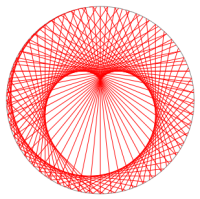Leetcode Contest 20
这周六的菜单是牛排骨、金鲳鱼和土豆丝,甜点是蛋糕。
这次比赛有四题,我只做出来了前三道。
第一道是简单的字符串处理。
class Solution(object):
def detectCapitalUse(self, word):
"""
:type word: str
:rtype: bool
"""
if all('A' <= c <= 'Z' for c in word):
return True
if all('a' <= c <= 'z' for c in word):
return True
return 'A' <= word[0] <= 'Z' and all('a' <= c <= 'z' for c in word[1:])
第二道直接深度优先搜索就是。
class Solution(object):
def countArrangement(self, N):
"""
:type N: int
:rtype: int
"""
def dfs(i, used, ans):
if i == N + 1:
ans[0] += 1
else:
for j in xrange(1, N+1):
if not used[j] and (i % j == 0 or j % i == 0):
used[j] = True
dfs(i+1, used, ans)
used[j] = False
ans = [0]
dfs(1, [False] * (N+1), ans)
return ans[0]
第三道我挂了三次才成功的。一开始以为可以用binary search:答案最小可能值是0,最大可能值是2*[len(num)/2],我就对这个区间二分查找。但是后来发现这个算法是不对的,反例如下:
nums = [1, 1, 0, 0, 0, 0, 1, 1]
这测试数据应该要返回8,但明显不存在长度为6的连续子数组使得0和1的个数一样。所以这个问题并不符合二分查找的条件。
给定nums,其实我们要找最大的l,使得存在一个i,我们有
做一个简单的运算,上述等式就变成
如果我们将nums的所有数都做了一个n -> 2n-1的变换,并且将变换后的数组求出其前缀和放在数组s里,那么上述等式等价于
所以我们可以初始化ans = 0,然后从小到大遍历所有i,找出最大的j使得s[j] = s[i-1],然后更新ans = max(ans, j-i+1)。为了快速查找这样的j,我们用一个哈希表d来记录某个和出现的最右位置。算法详细实现如下。
class Solution(object):
def findMaxLength(self, nums):
"""
:type nums: List[int]
:rtype: int
"""
s = [0]
for n in nums:
s.append(s[-1]+2*n-1)
d = {}
for i, n in enumerate(s):
d[n] = i
ans = 0
for i in xrange(1, len(s)):
j = d.get(s[i-1], -1)
ans = max(ans, j - i + 1)
return ans
第四题比赛的时候没有写出来。看了别人的代码发现算法其实很简单:假设最后每个洗衣机的平均值为k,对于洗衣机i,如果
那么说明需要从第i个位置向右移动machines[0]+...+machines[i]-k(i + 1)单位的衣服,反之则是说明需要从第i+1个位置向左移动k(i + 1)-(machines[0]+...+machines[i])单位的衣服。最后答案就是每个位置向左向右移动之和的最大值。
class Solution(object):
def findMinMoves(self, machines):
"""
:type machines: List[int]
:rtype: int
"""
s = machines[:]
for i in xrange(1, len(s)):
s[i] += s[i-1]
if s[-1] % len(s) != 0:
return -1
k = s[-1] / len(s)
to_left = [0] * len(s)
to_right = [0] * len(s)
for i in xrange(len(s)):
if s[i] >= k*(i+1):
to_right[i] = s[i] - k*(i+1)
else:
to_left[i+1] = k*(i+1) - s[i]
return max(a+b for a, b in zip(to_left, to_right))
我们可以降低空间的使用:
class Solution(object):
def findMinMoves(self, machines):
"""
:type machines: List[int]
:rtype: int
"""
s, l = sum(machines), len(machines)
if s % l != 0:
return -1
k, c = s / l, 0
to_left = ans = 0
for i, n in enumerate(machines):
n += c
if n >= k:
ans = max(n-k+to_left, ans)
to_left = 0
else:
ans = max(to_left, ans)
to_left = k - n
c = n - k
return ans
